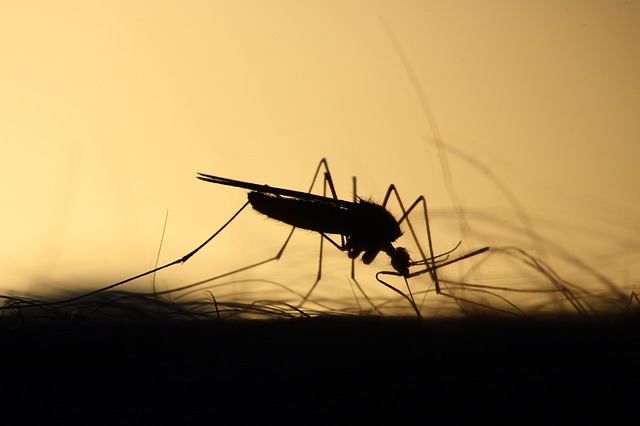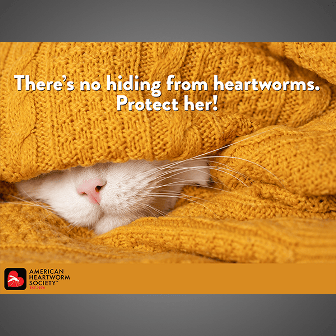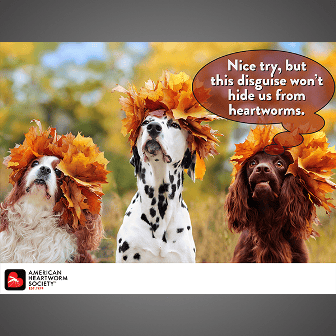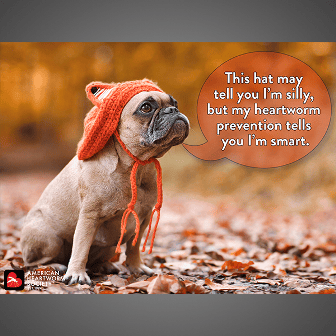The recent rains and storms can give rise to a big surge in the mosquito population that could result in a big threat to our pets: heartworm infection. Heartworms are the common name of Dirofilaria immitis, 12-inch long worms that dwell inside the heart chambers and lungs of affected animals. Although the disease is most prevalent in the hot southeastern parts of the U.S., there have been cases all the way north of the Great Lakes. An incidence map denoting the areas where this infection is most prevalent can be seen at https://www.heartwormsociety.org/veterinary-resources/incidence-maps. Unsurprisingly, Florida is heartworm heaven and there’s a widespread infection that includes not just dogs as victims but cats, foxes, coyotes, ferrets, and other mammals.
When warm weather hits, you will want to ramp up your heartworm education efforts. To help make this goal easy--and fun--the AHS has created a new set of posters to print or post on your social pages.
- To save or print a poster, just click on the image below, then click on the “download” button and save the PDF file.
- To save a poster for use on your social pages, simply open the downloaded poster, then right click on the file and follow the menu instructions to save the file as a JPEG image.
For more client tools, be sure to visit the Resource Center. And if you don’t already, make sure you’re sharing our Facebook and Instagram posts!

















